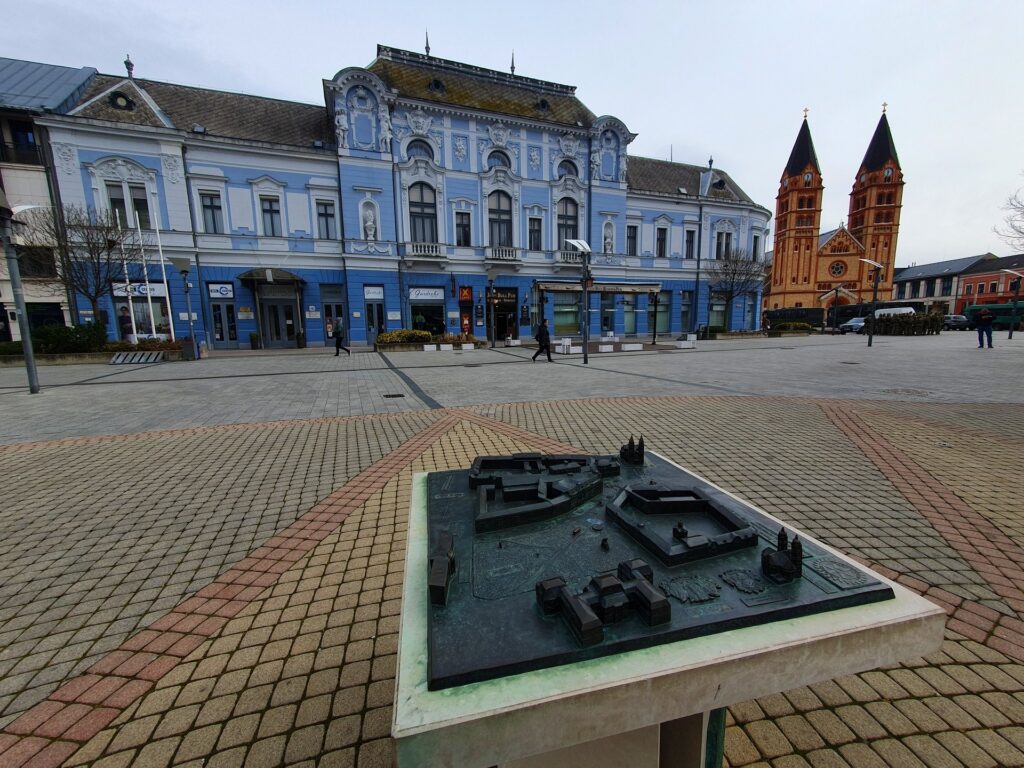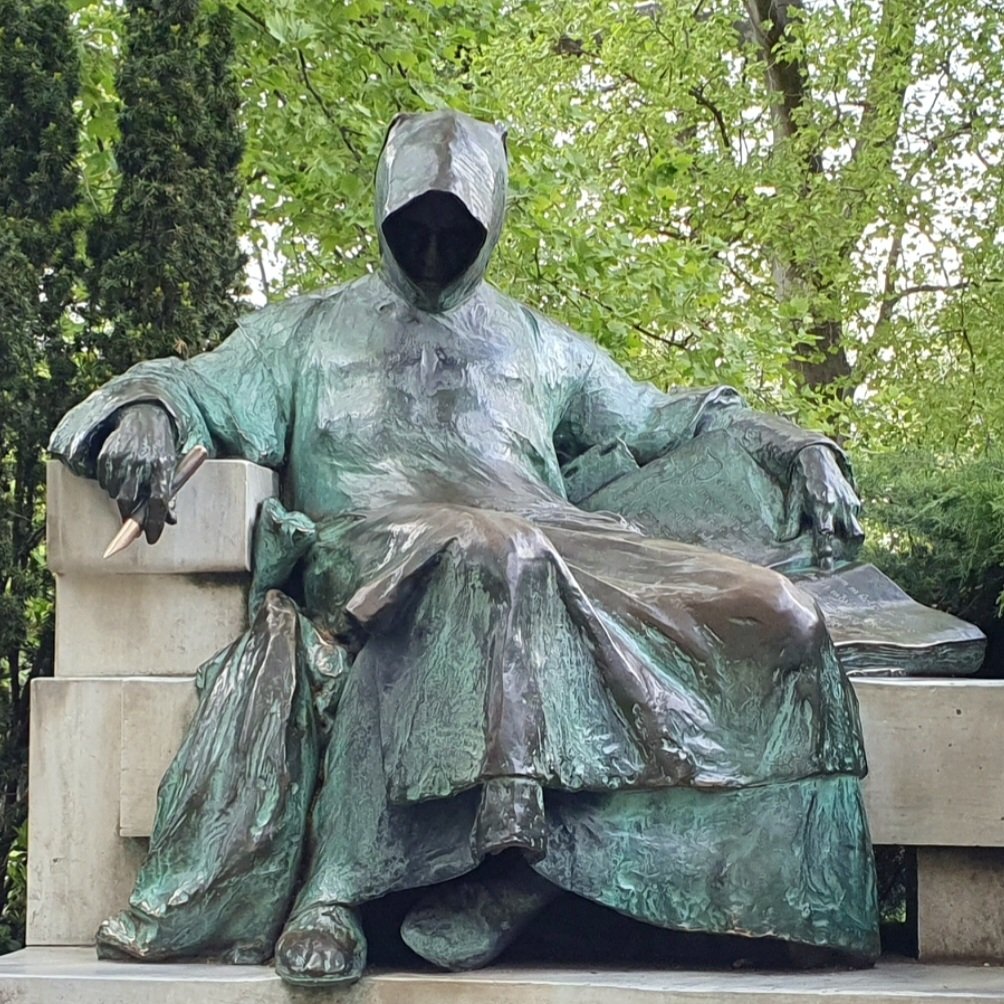Nyíregyháza (Mestecănești in Romanian) is the 7th largest city of Hungary and the capital of the Szabolcs-Szatmár-Bereg County. It lies in the north-eastern part of Hungary and its surrounding county is the other half of the historical Szatmár region, the rest being now in Romania. The city was first mentioned in year 1209; the long and difficult to pronounce name comes from nyír (birch) and egyház (church) in the Hungarian language. Our journey begins from the railway station or Vasútállomás. Enjoy!
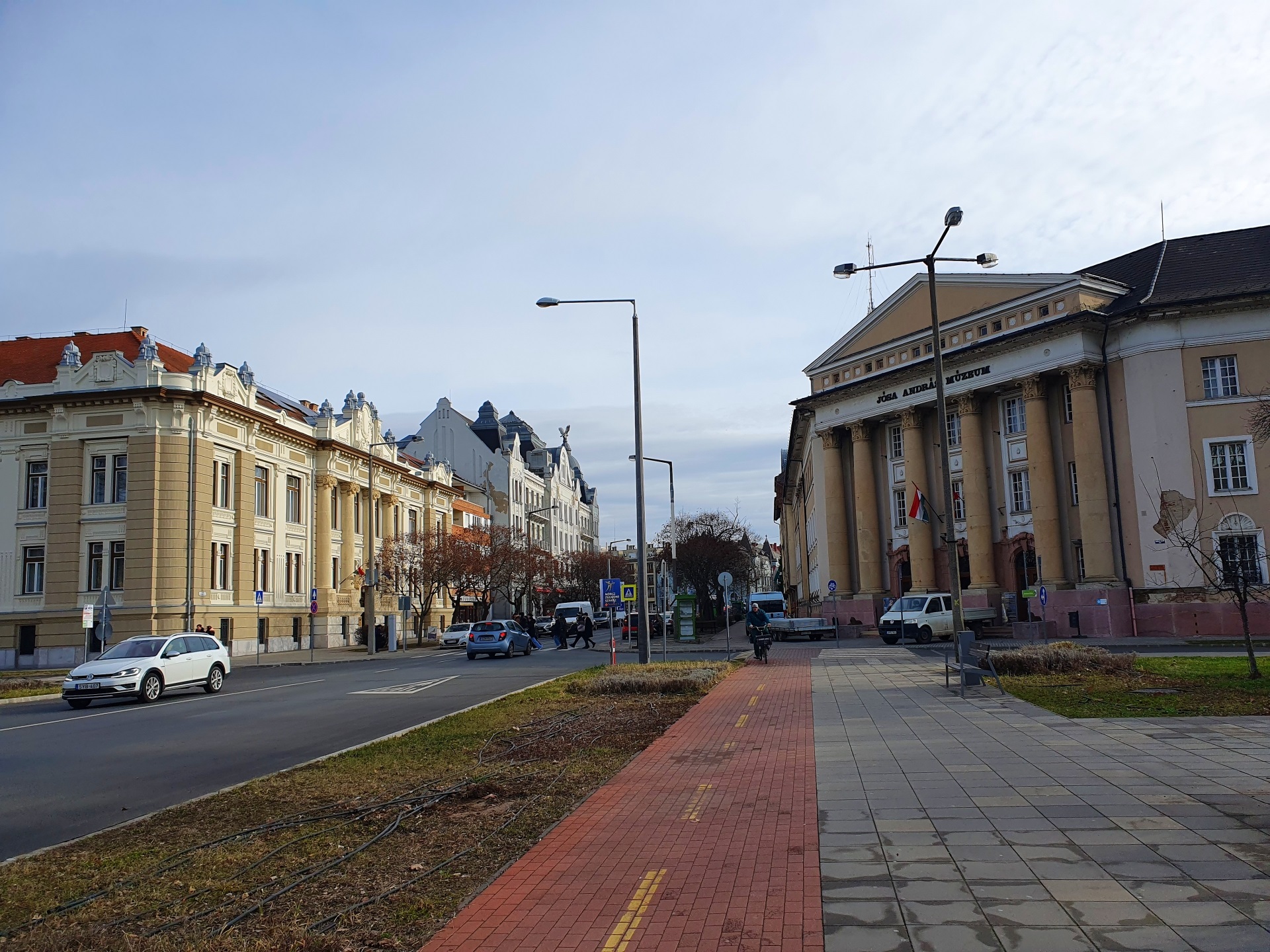
Jósa András Múzeum (history & ethnographic local museum) is to the right, while to the left is the Szabolcs-Szatmár-Bereg County Government Office or Szabolcs-Szatmár-Bereg Megyei Kormányhivatal (basically the family support and social insurance department), and further in the background and to the left is the Nyírvíz Palace or Nyírvíz-palota.

Nyírvíz Palace was built in 1914, in the Art Nouveau style.
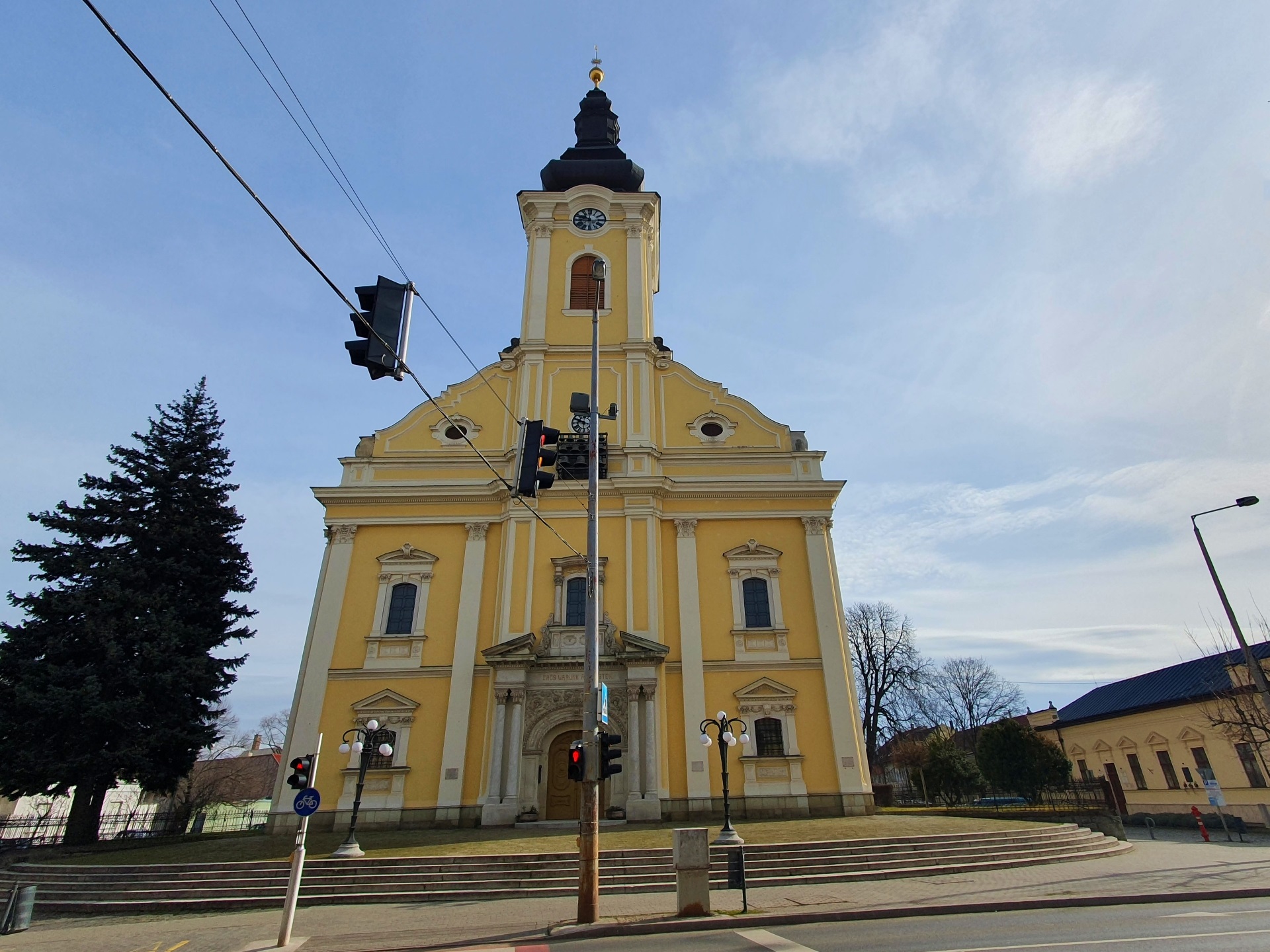
The Evangelical Great Church of Nyíregyháza or Nyíregyházi Evangélikus Nagytemplom, with the Nyíregyházi Evangelical Parish Church Hall to the right.

The Nyíregyháza Mayor’s Office or Polgármesteri Hivatal Nyíregyháza in Kossuth square or Kossuth tér.
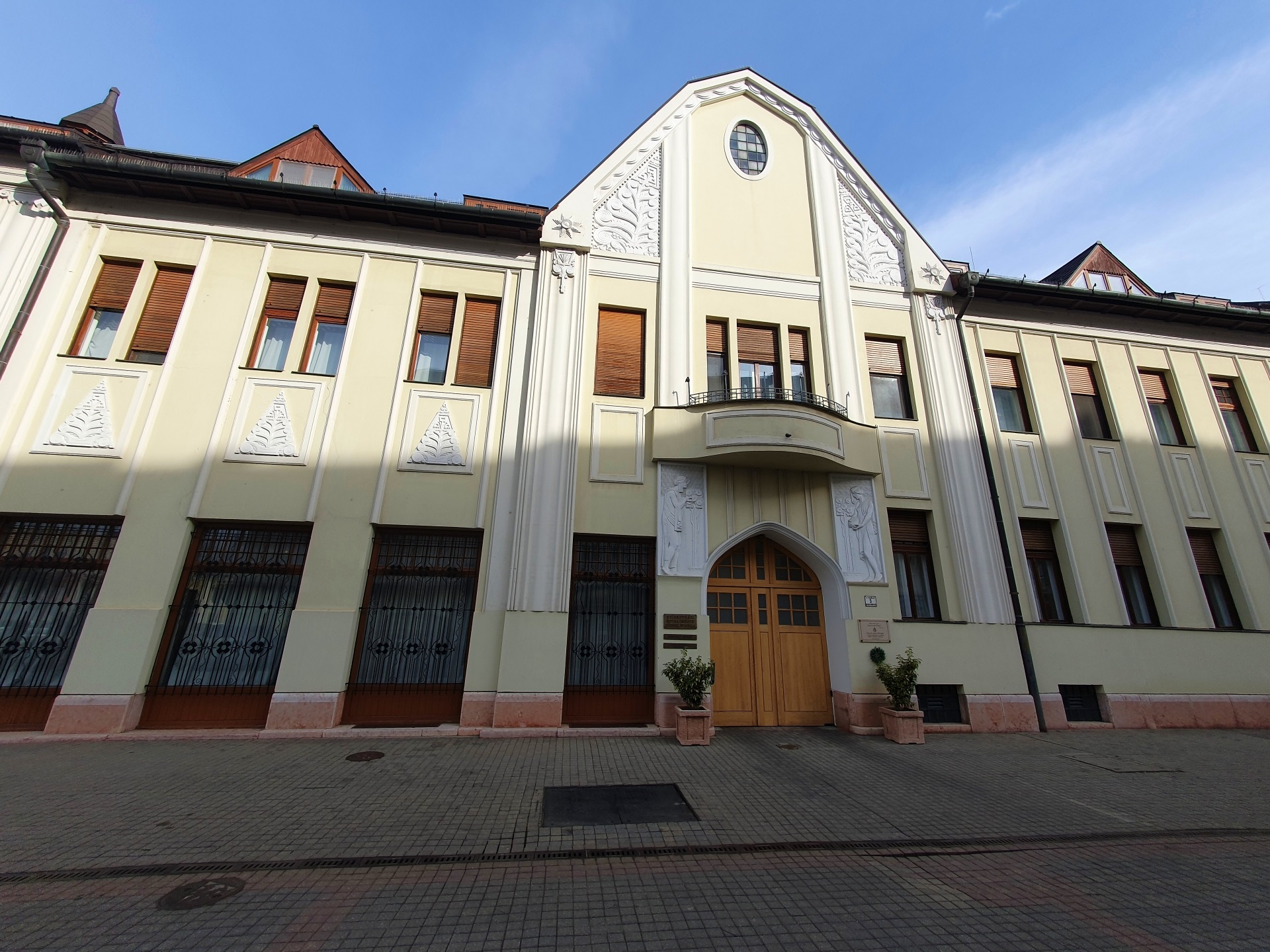
The Greek Catholic Diocese of Nyíregyháza or Nyíregyházi Görög Katolikus Egyházmegye.
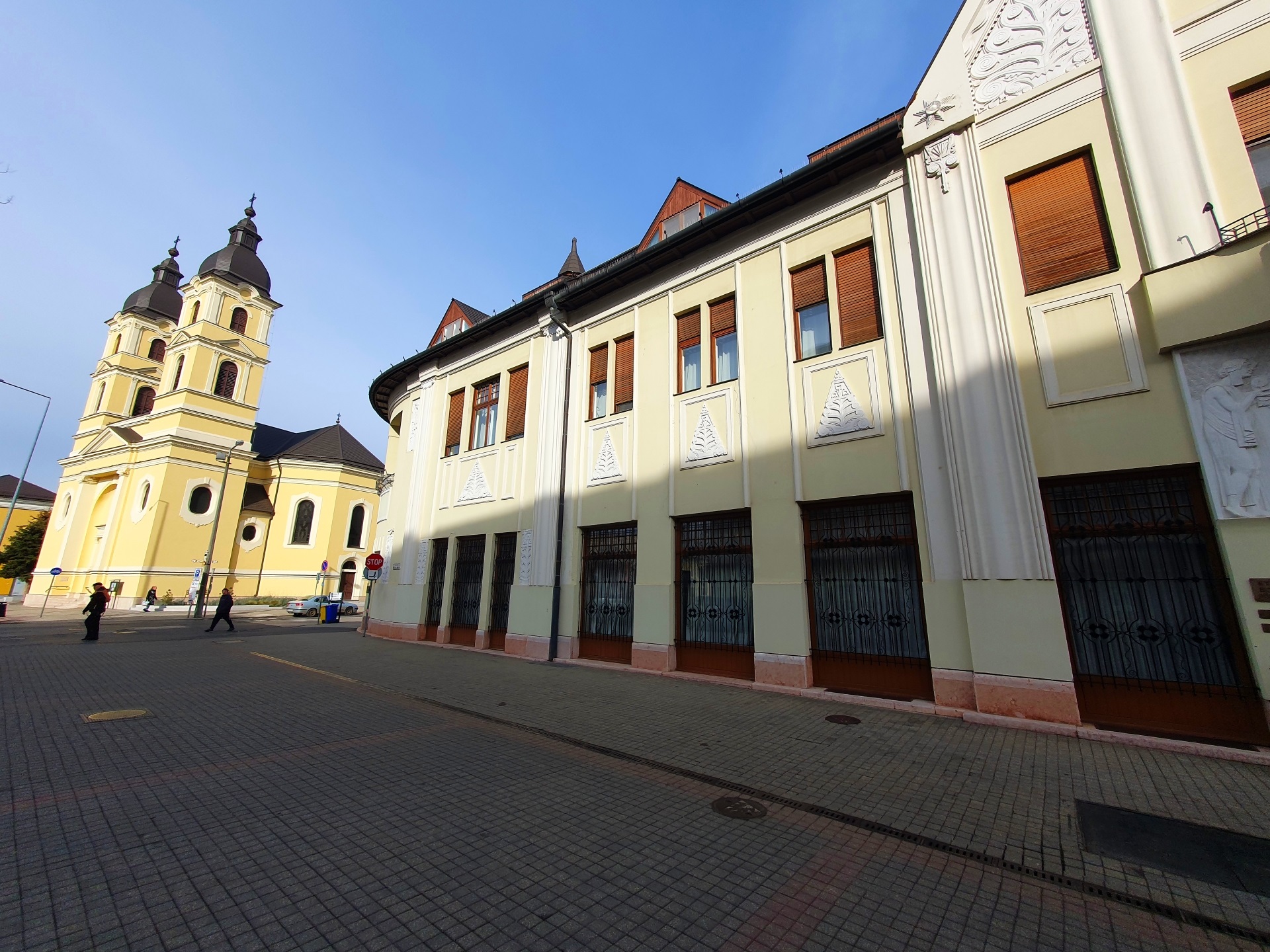
The Saint Nicholas Greek Catholic Cathedral or Szent Miklós Görögkatolikus Székesegyház, to the left.

Next to the cathedral is the Saint Nicholas Greek Catholic High School and College or Szent Miklós Görögkatolikus Gimnázium és Kollégium.
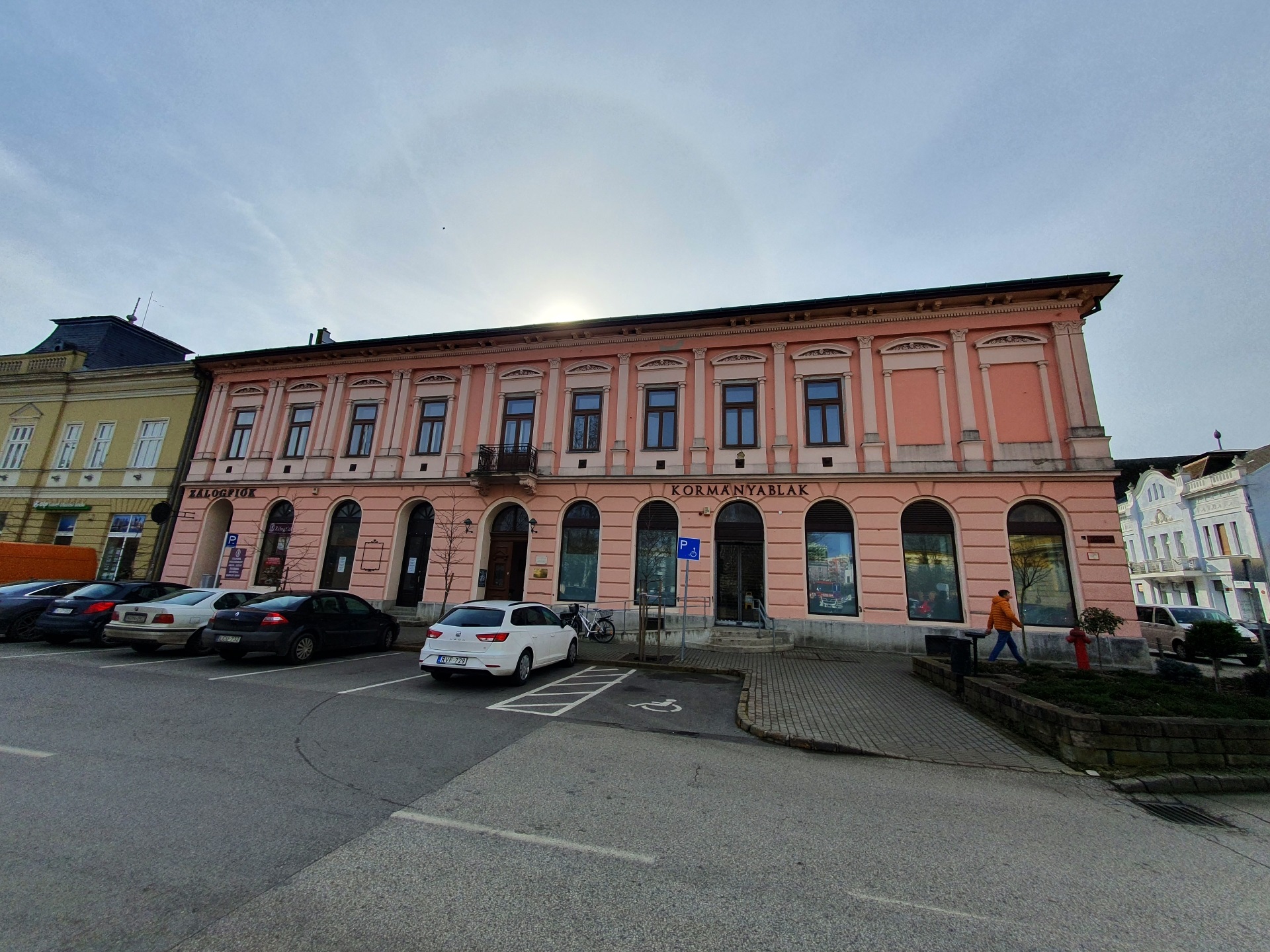
The Kormányablak or the government office dealing with vehicle registrations.
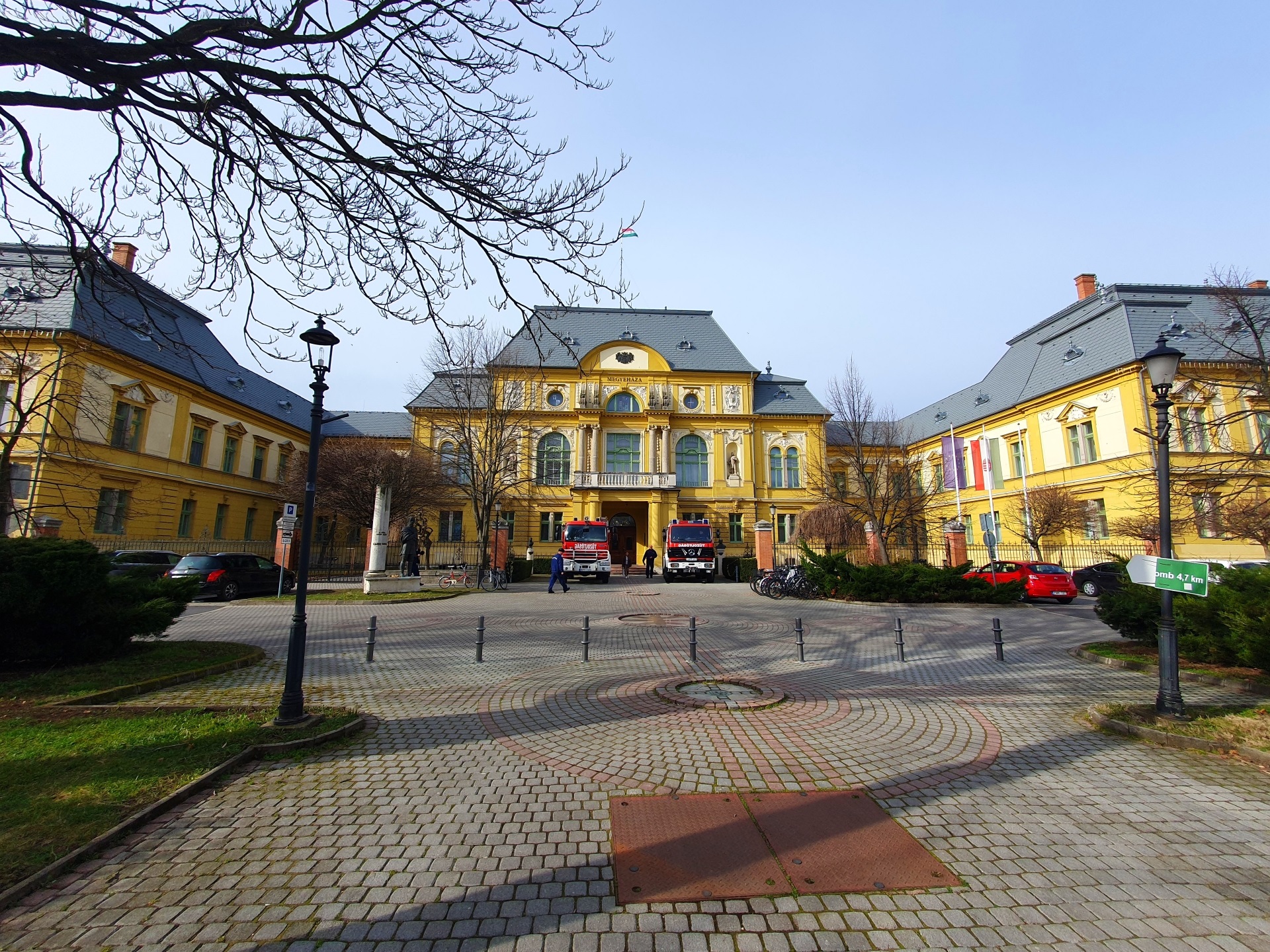
The Megyeháza or the City/County Hall, built by the architect by Ignác Alpár. This architect has built a lot of other buildings I know, such as the town halls of Cluj-Napoca, Sighişoara and Deva, as well as many buildings in Sibiu, Brasov, Timisoara, Targu Mures, Alba Iulia, Fagaras, Budapest, Bratislava, etc., and surprisingly, the Peace Palace of the Hague. At the time I visited the city there were military exercises (for the March parade, probably) and there were firefighter engines parked in front of the building.
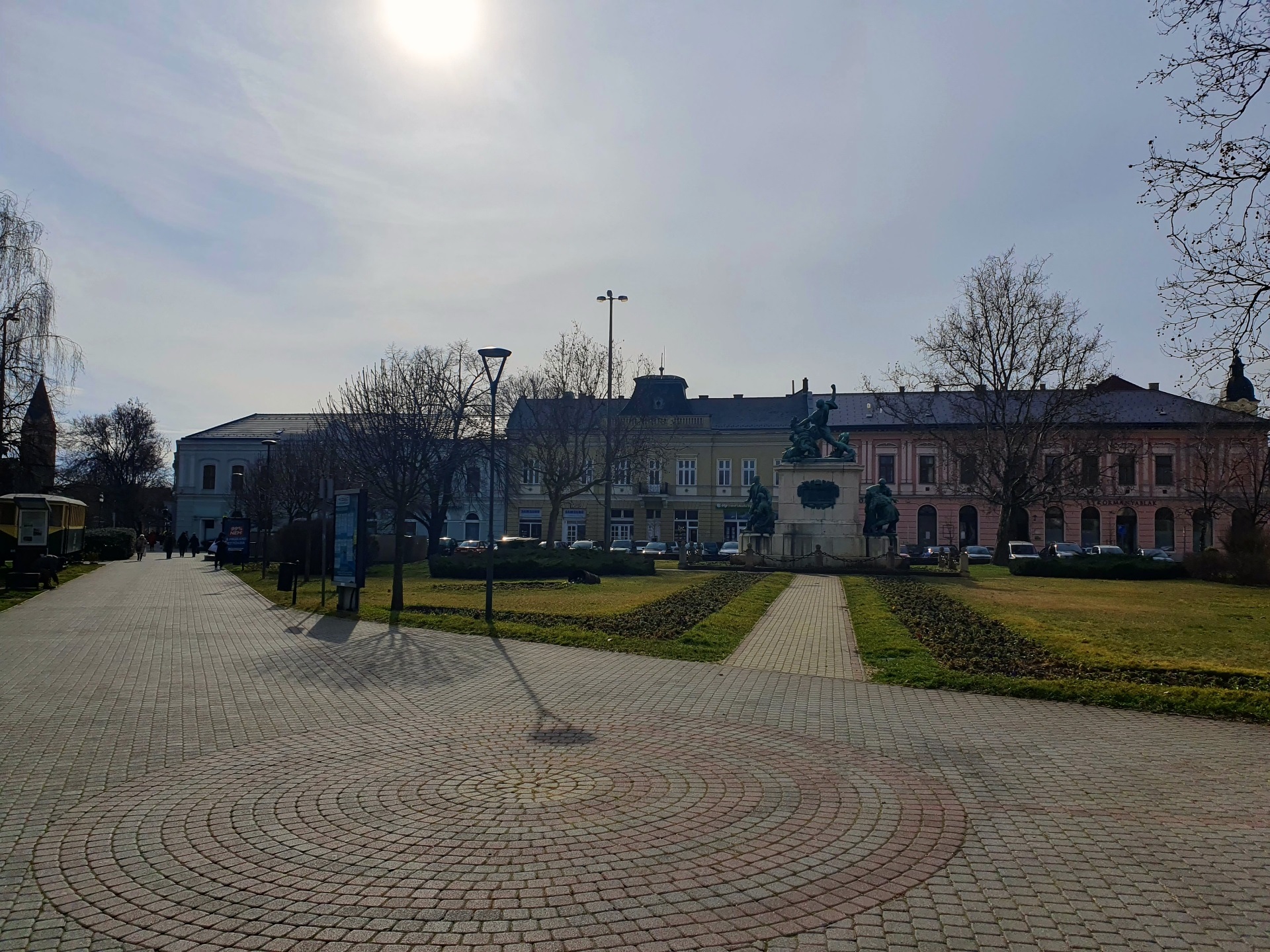
In front of the city hall is the Heroes’ Square or Hősök tere. The statue is the Heroes’ Monument or Hősök emlékműje. Kormányablak is behind.

In the same square is the Monument of National Unity or Nemzeti Összetartozás Emlékműje. It seems to show, metaphorically, the branches of the Hungarian people and the continuity, while belonging to or originating from a common source. Behind is another government office dealing with the labor protection and inspection throughout the surrounding county.

In the same part of the park is something interesting…

There is, at ground level, a plate with an inscription on it. It’s historically significant because it shows the ancient “Great Hungary” and the territories that have been lost to the surrounding countries: Austria, Slovenia, Croatia, Serbia, Romania (Transylvania), Ukraine and Slovakia. This is a source of tensions between Hungary and its neighbors, as there are, unavoidably after so many hundreds of years of common history, large Hungarian minorities in all these countries.
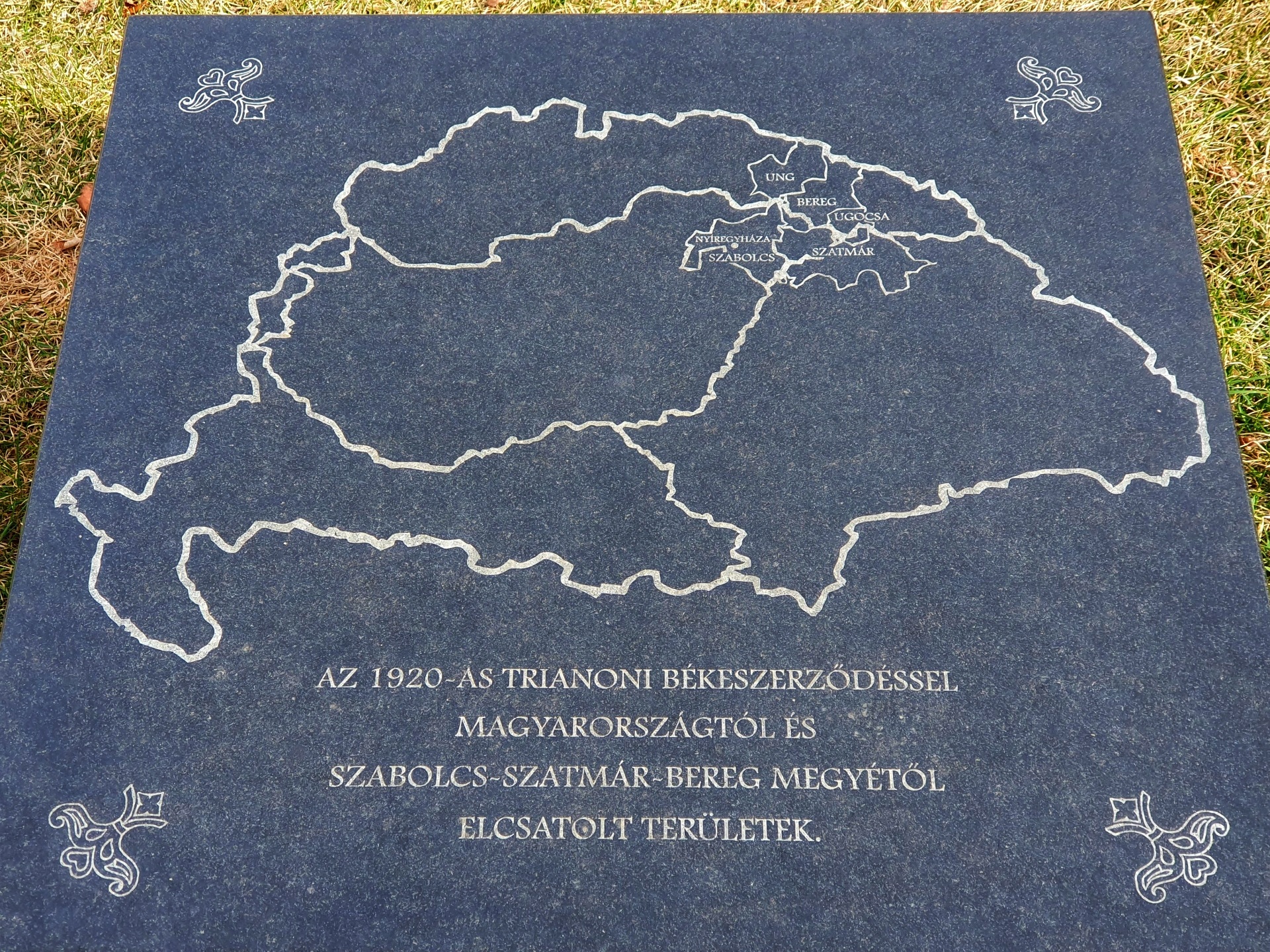
Here is a detail of the plate. You can see that the former region surrounding Nyíregyháza is now divided between Hungary, Ukraine and Romania. This is complicated business and this makes me hate borders…

The Váci Mihály Cultural Center or Váci Mihály Kulturális Központ, built by Ferenc Bán. Quite futuristic…
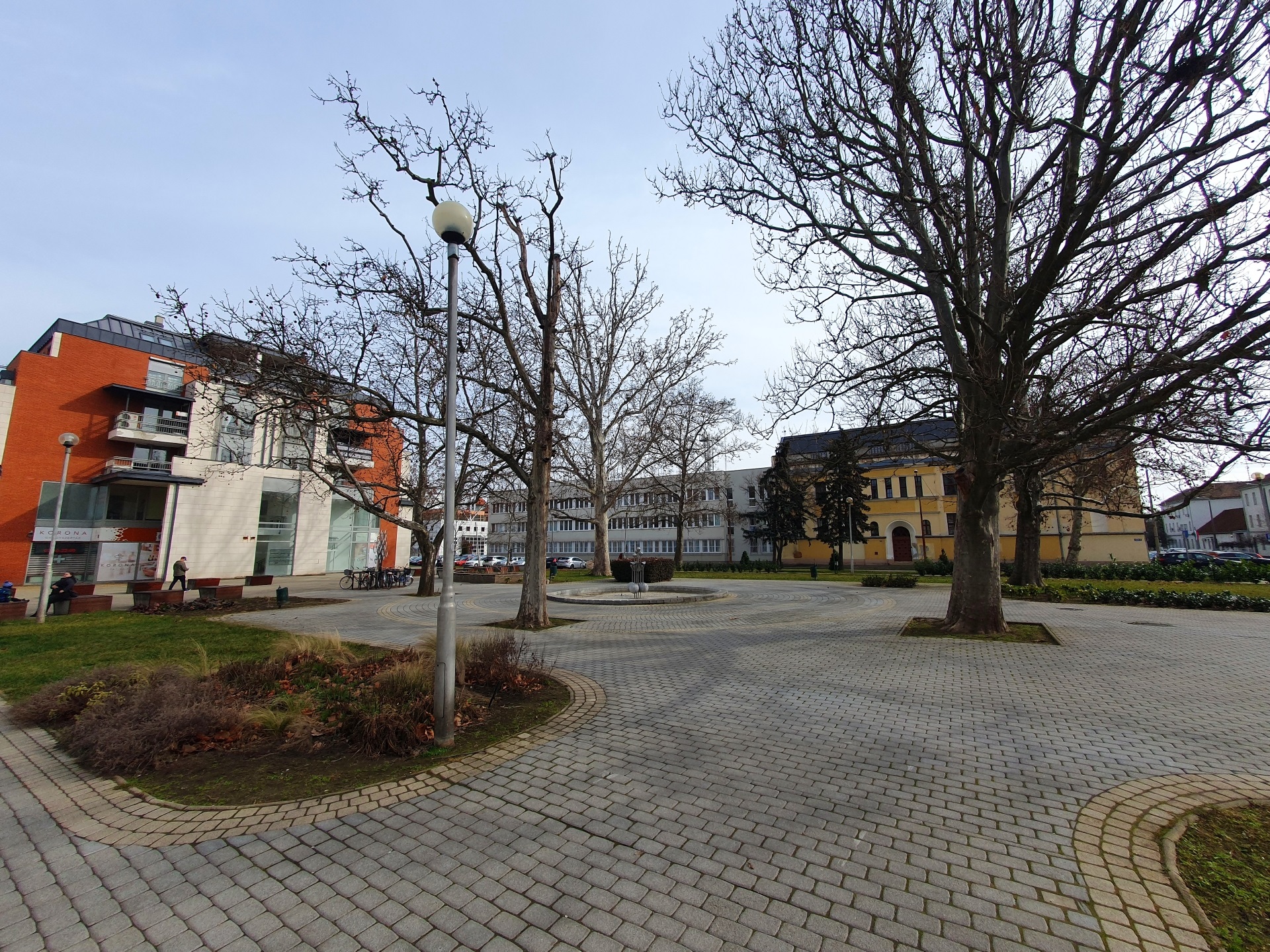
A view of Freedom Square or Szabadság tér.

A view of Zsigmond Móricz County & City Library or Móricz Zsigmond Megyei és Városi Könyvtár, with the Our Lady of Hungary Cathedral in the background.
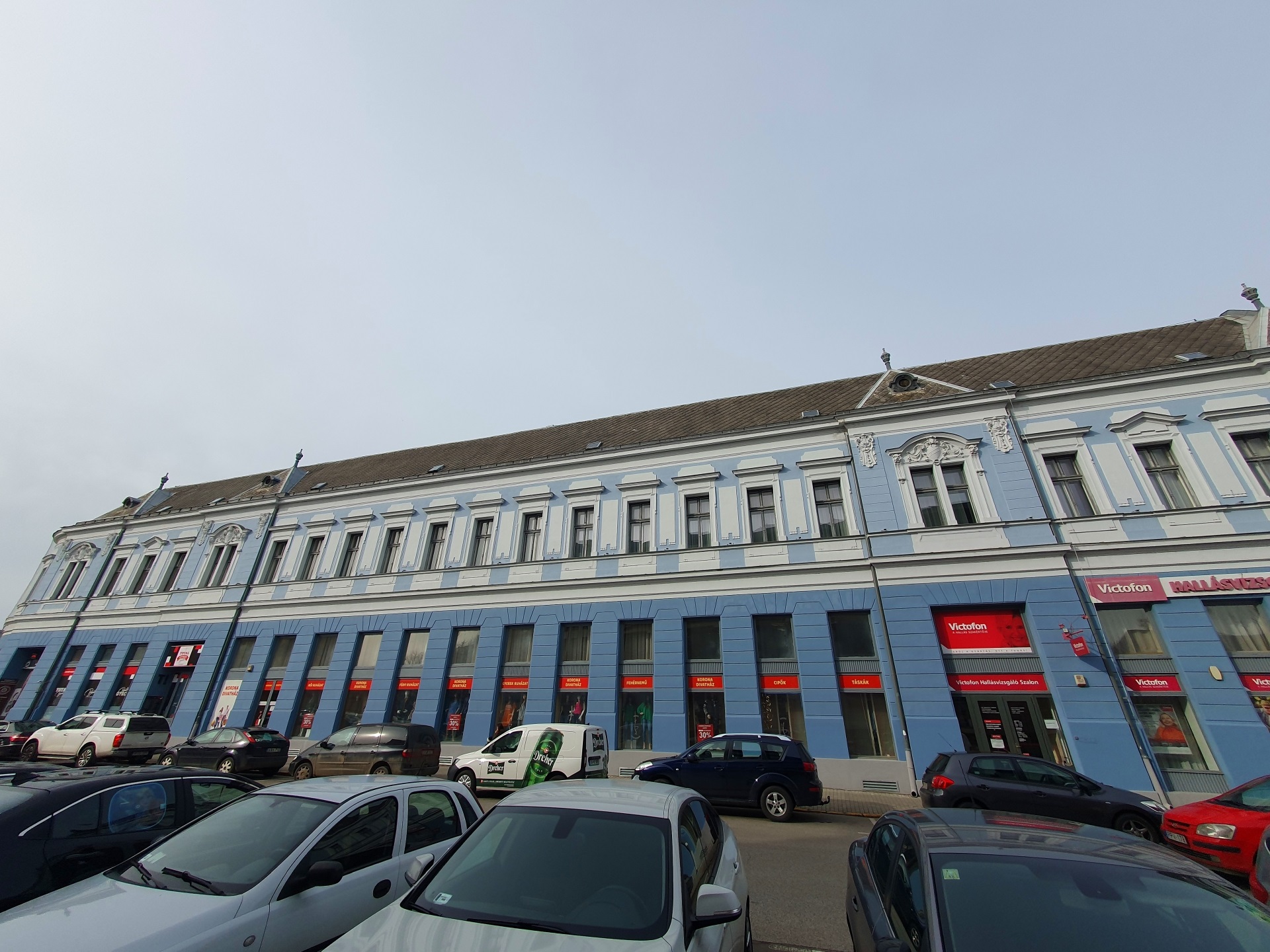
Another county office building, focusing on employment.
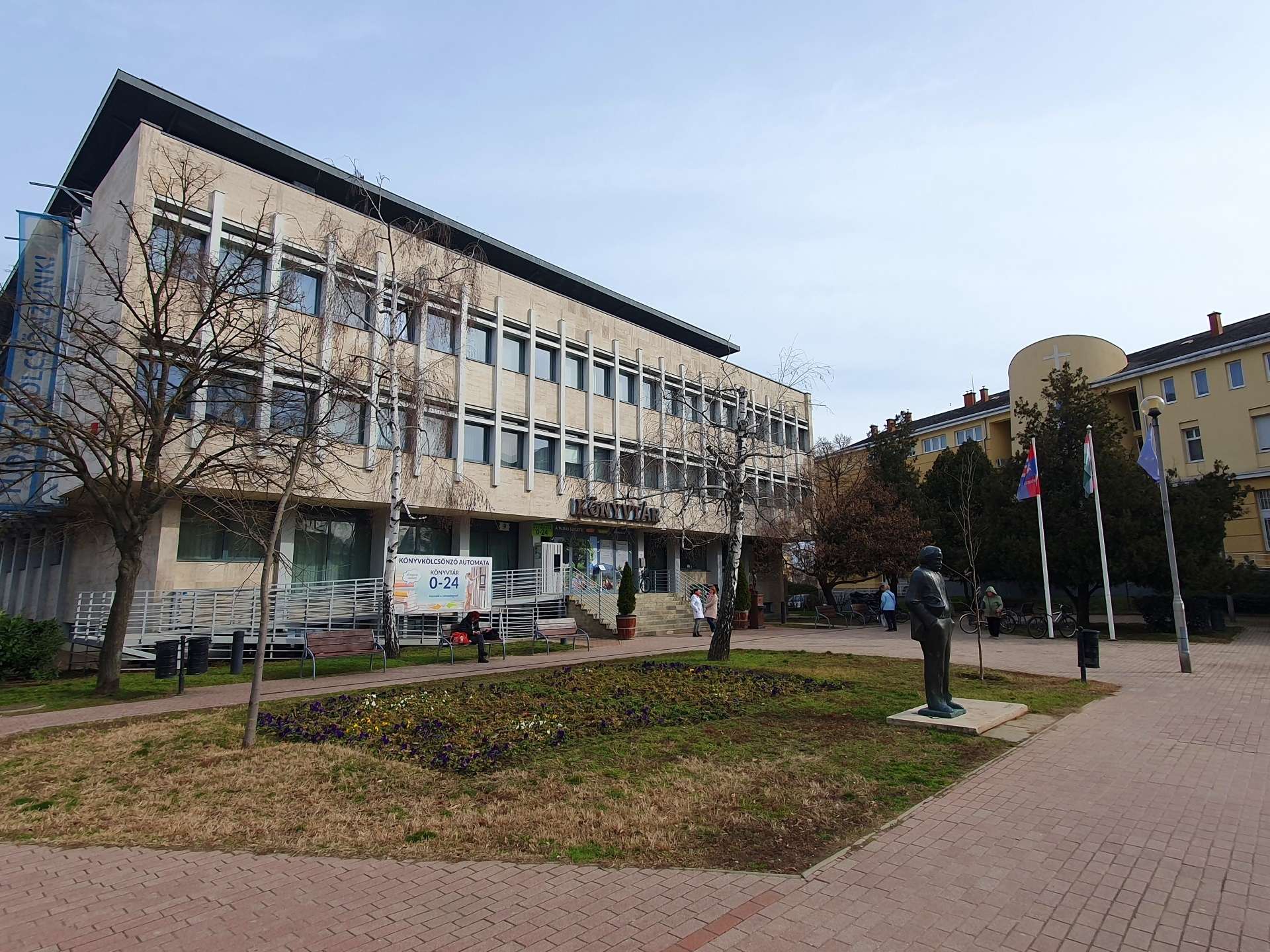
The entrance in the City Library. In front of it is the statue of the writer Móricz Zsigmond.
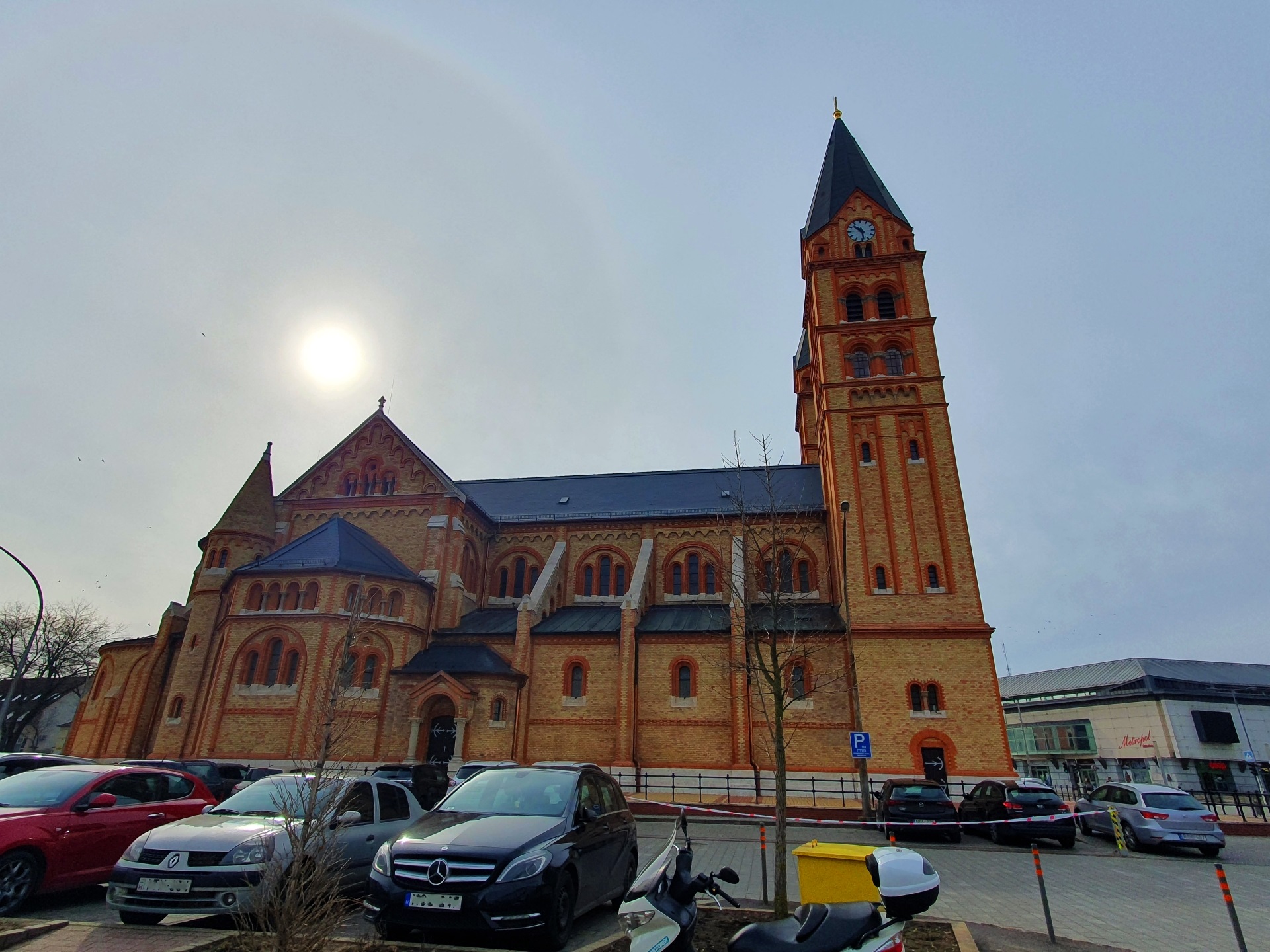
Across the library is the Our Lady of Nyíregyháza Cathedral, built in 1902 in the Neo-Romanesque style.

A detailed view of the exterior of the cathedral.
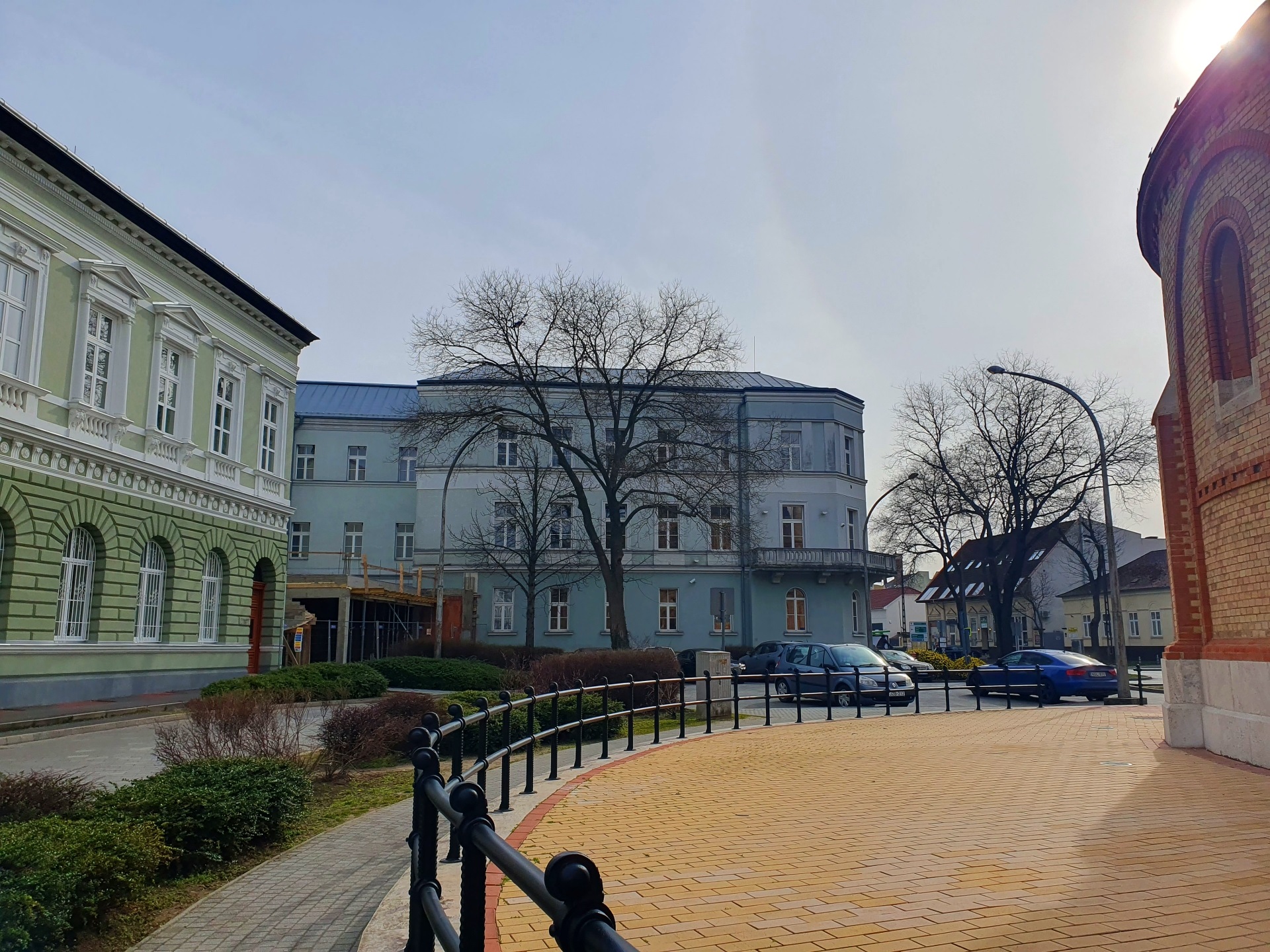
Near the cathedral, the blue building belongs to the Nyíregyháza District Court or Nyíregyházi Járásbíróság.

The impressive entrance in the cathedral.
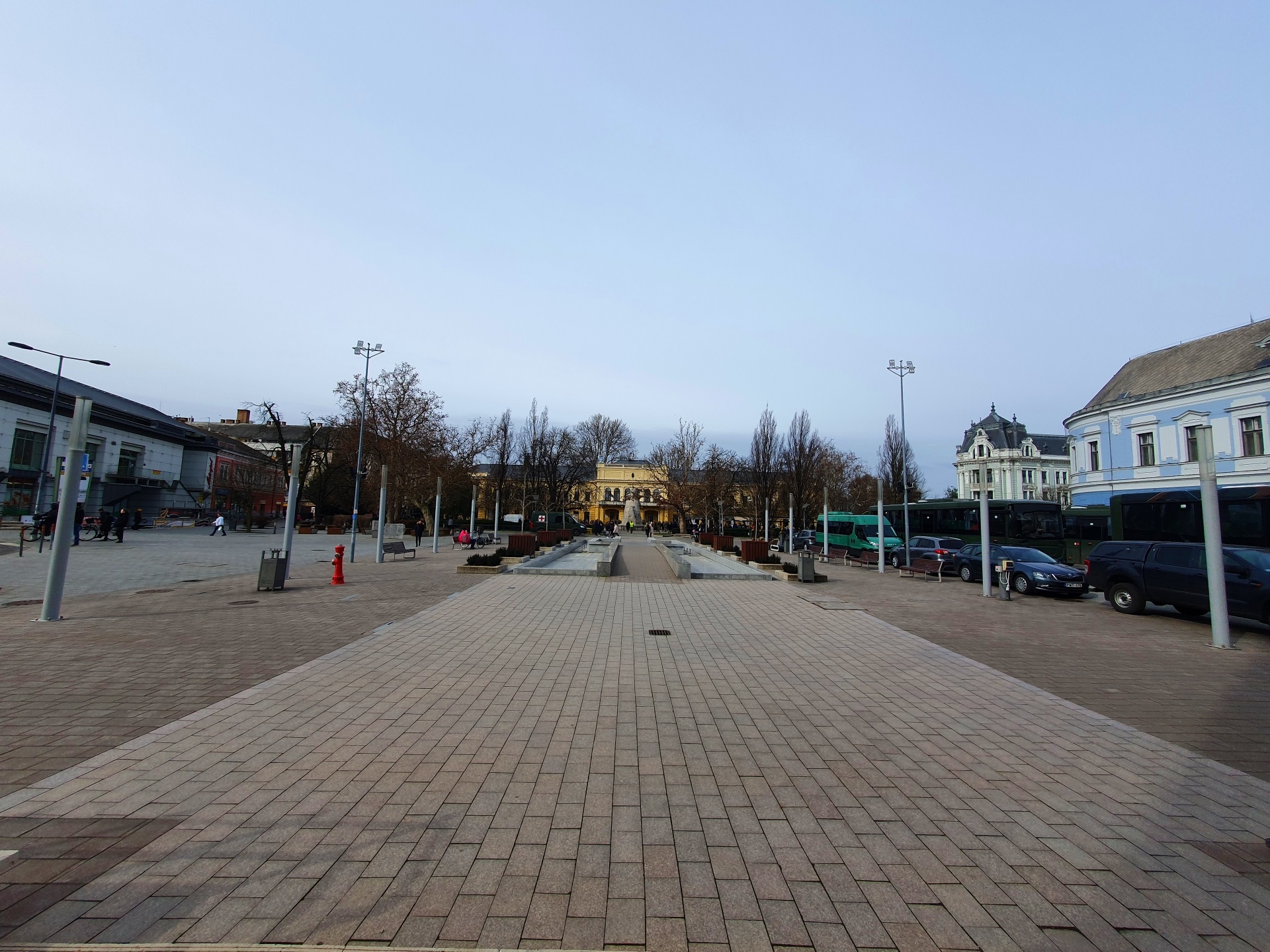
The view from the very same point, across the Kossuth tér, with the Kossuth kút (a well) and Kossuth Lajos statue in the foreground, and Polgármesteri Hivatal in the background.
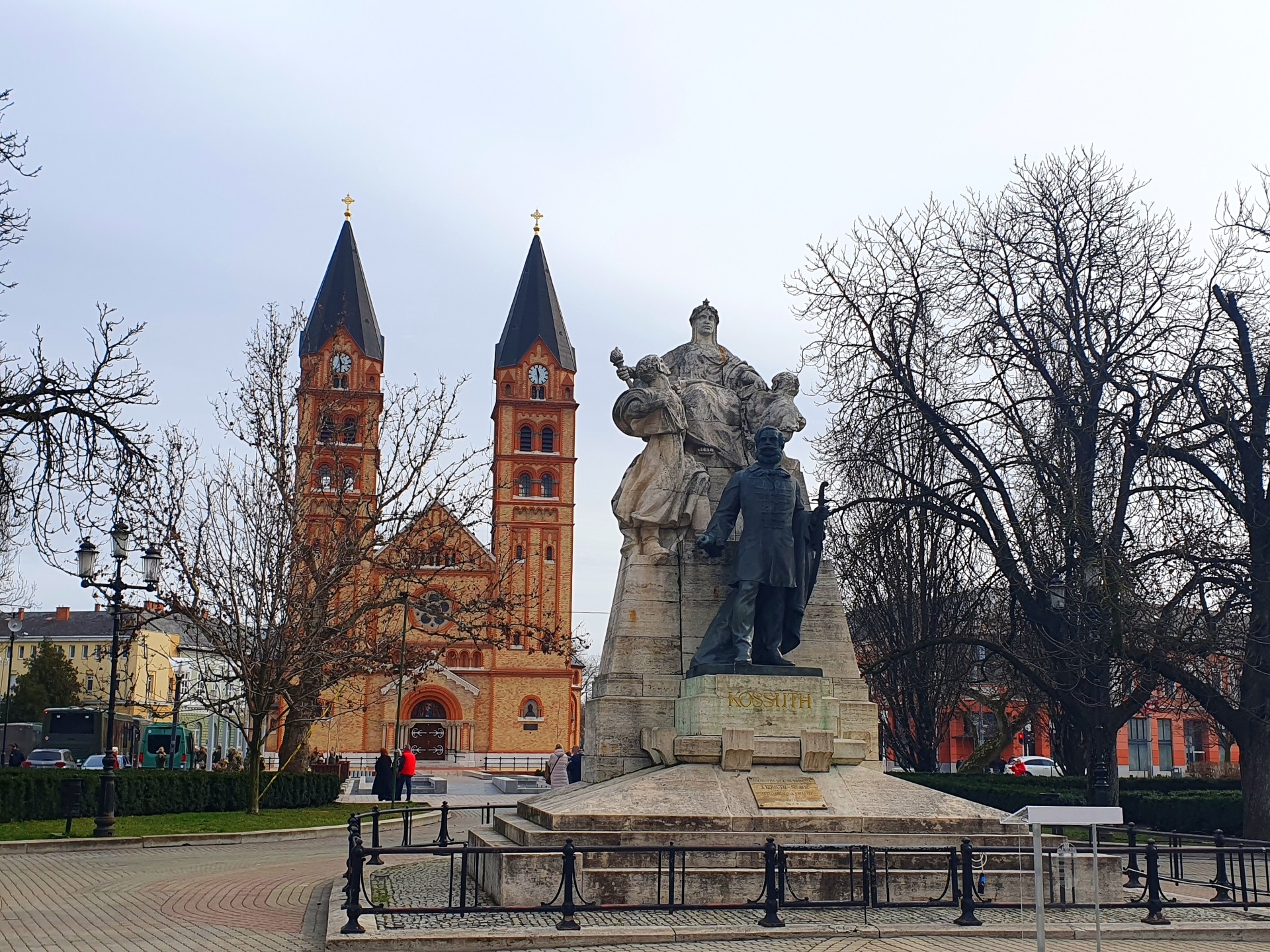
The attractions are quite lined up, so here is a view of the cathedral from near the Kossuth Lajos statue.
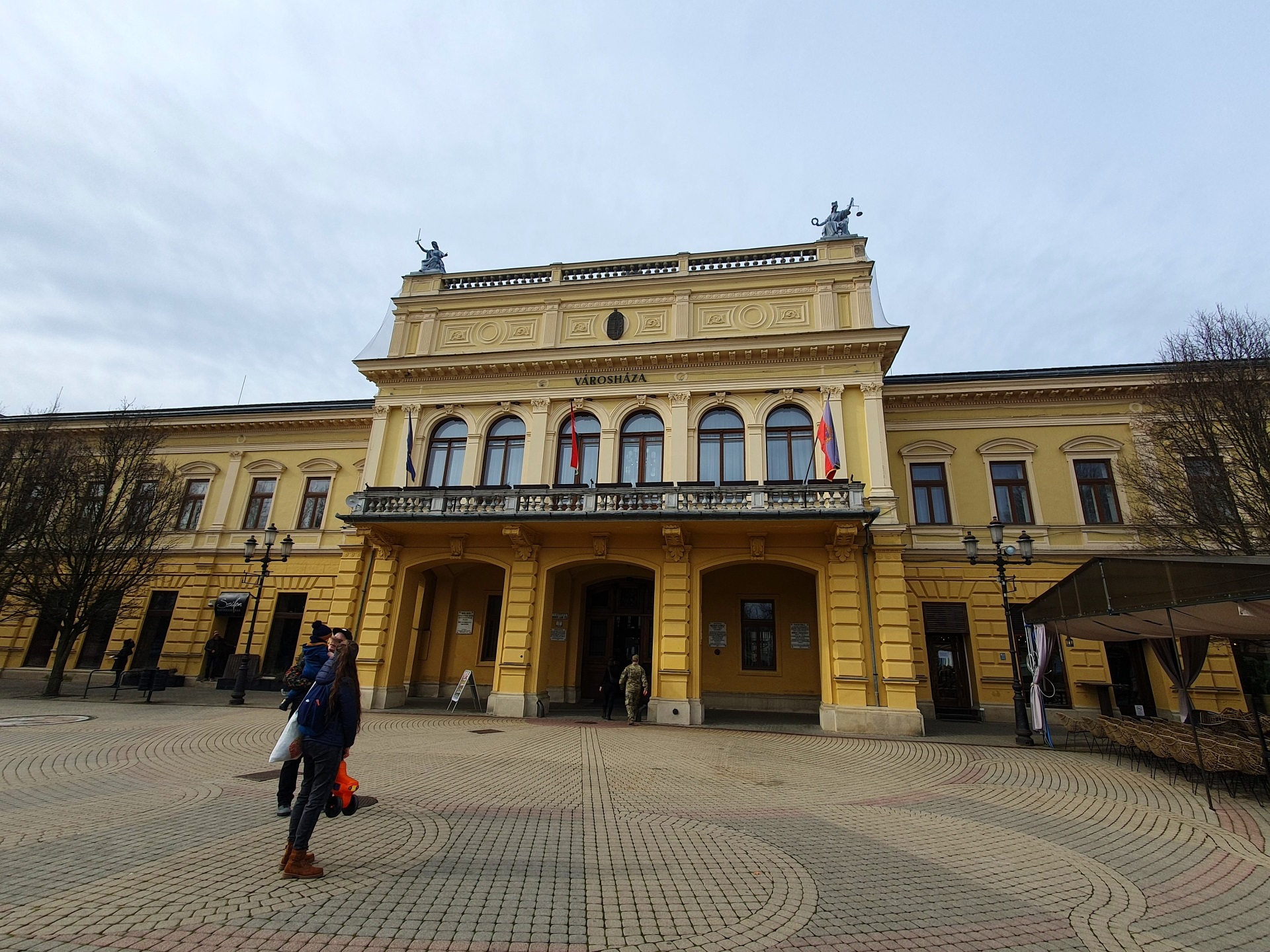
And here is a detail of the entrance to the Megyeháza.
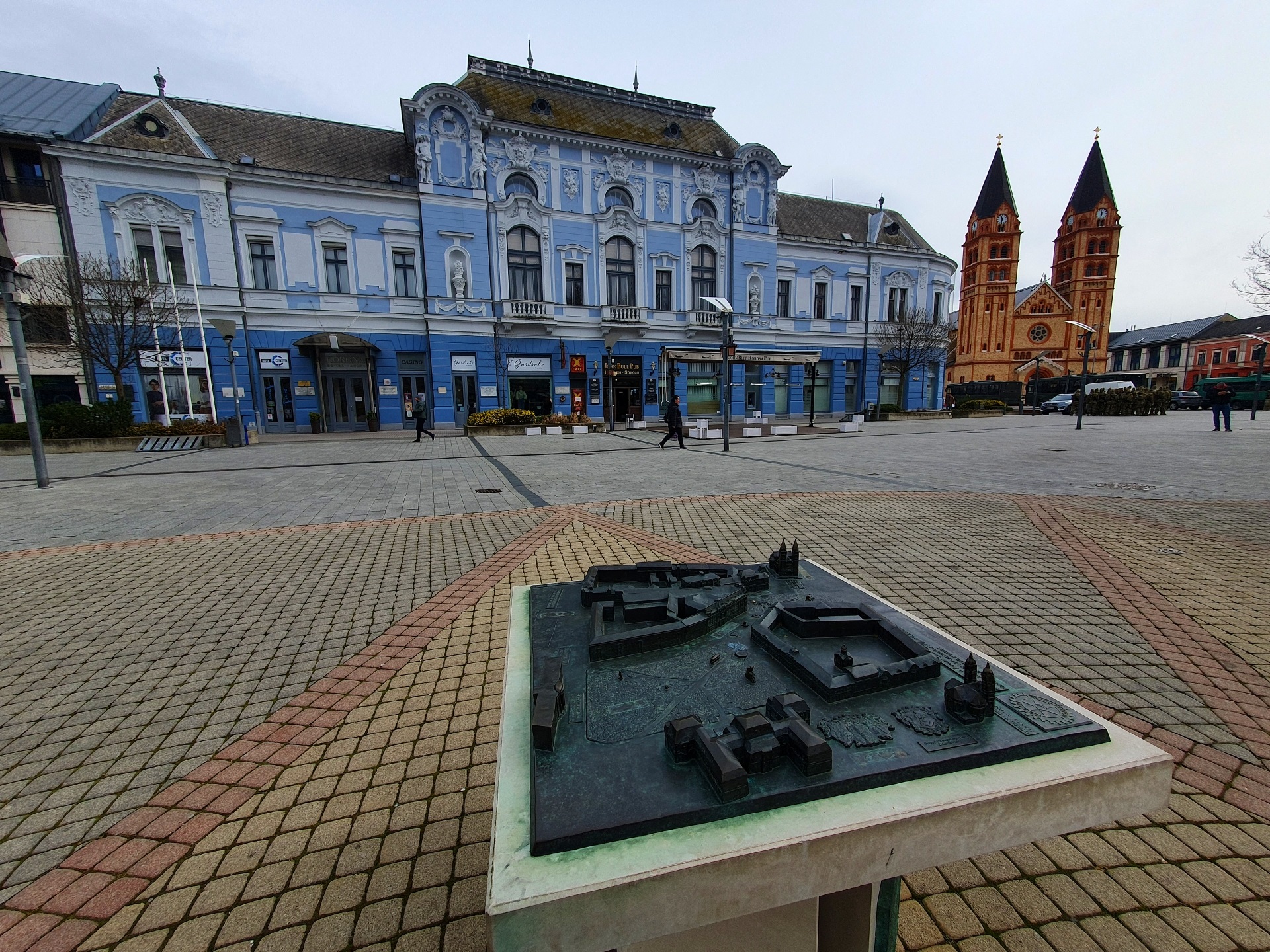
A nice view of the same square with a Downtown Model by the Rotary Club for the visually impaired or Rotari Klub Gyengénlátók Belváros Makettje (foreground), and the cathedral and other government offices and shops in the surrounding blue buildings.
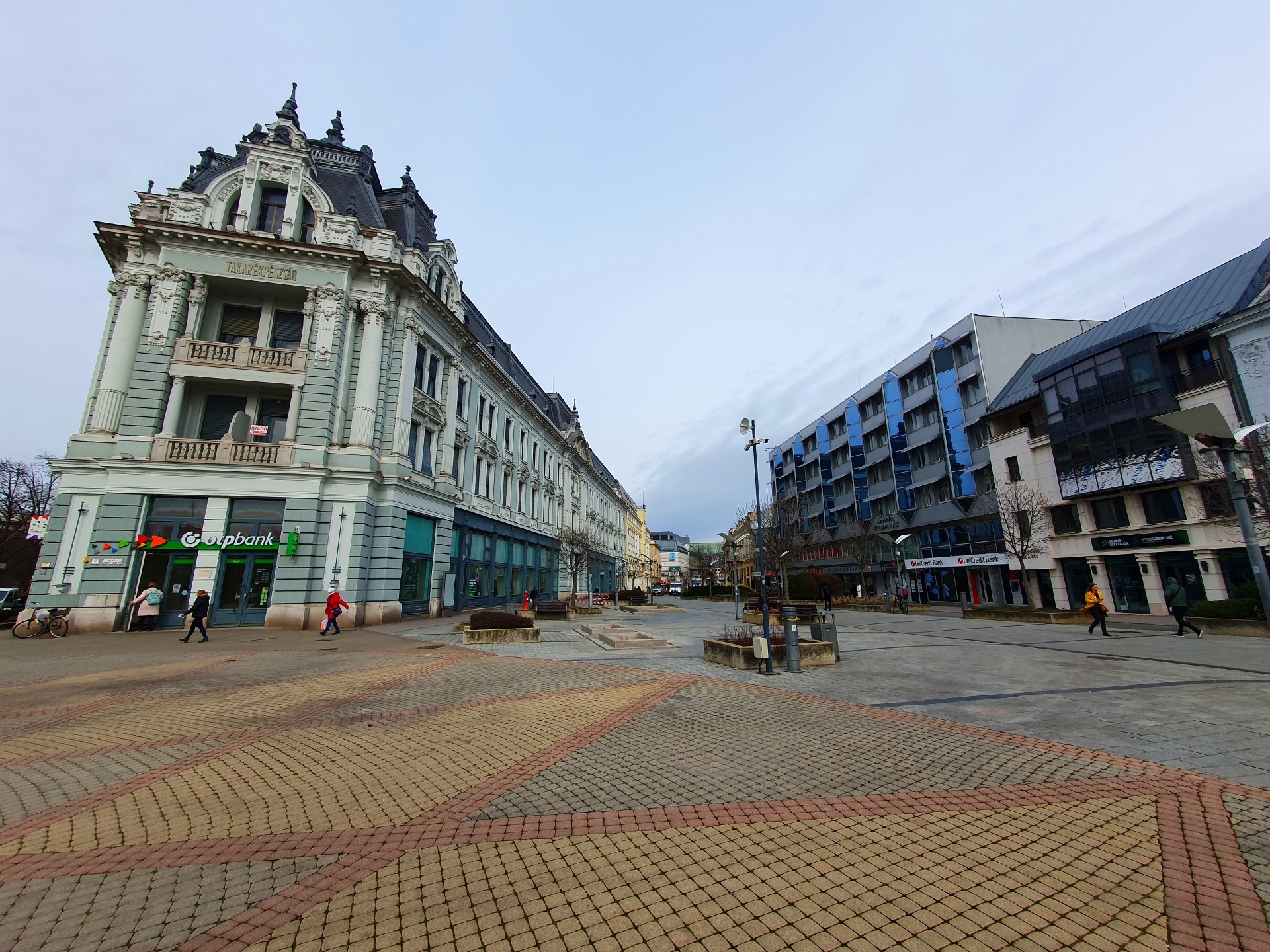
Turning to the left in the same point, here is one classical view of the city: the Saving Palace or Takarekpalota. OTP Bank, at ground level, is the main Hungarian bank.
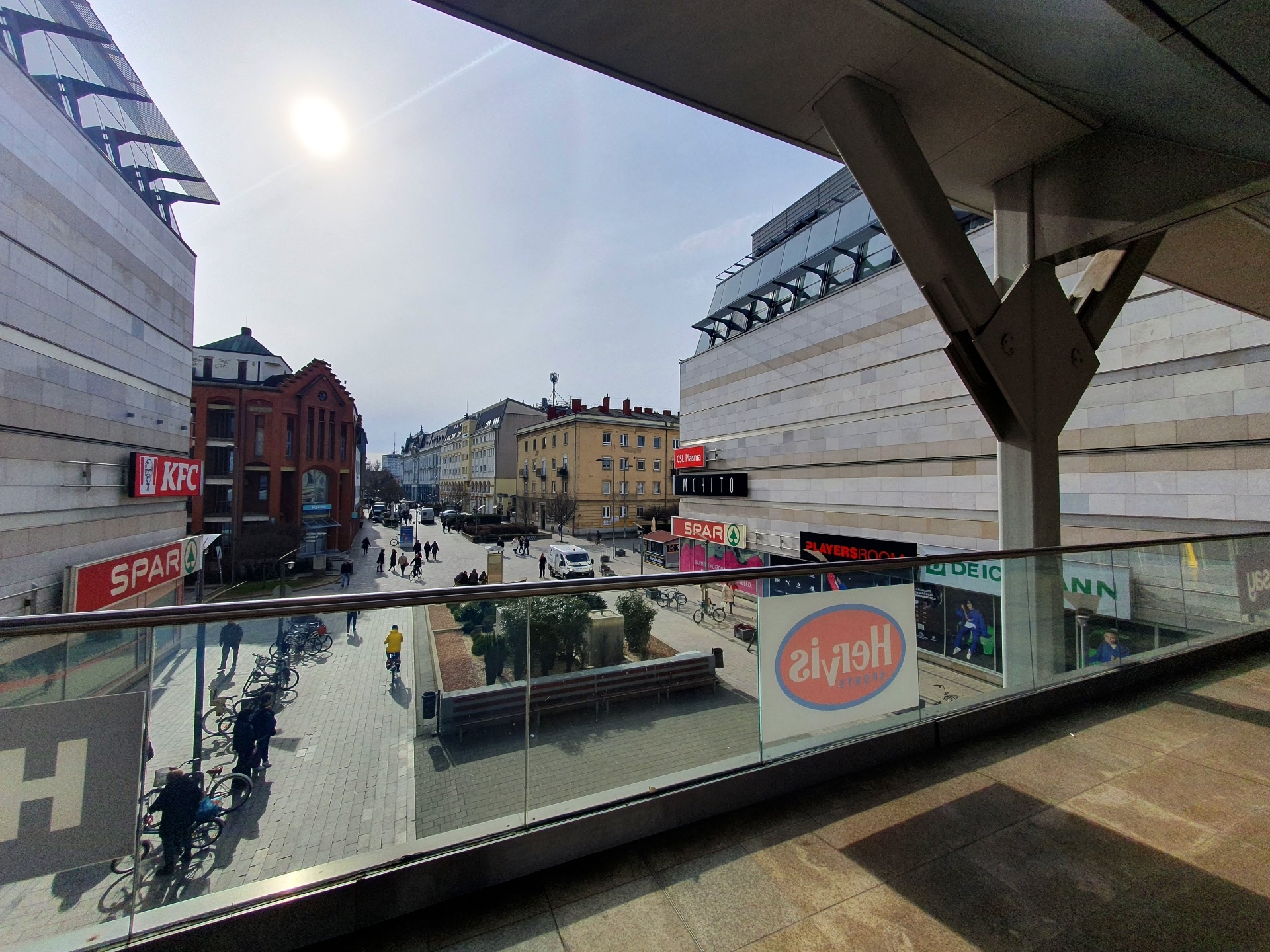
Following the street, we arrive at Korzó, the shopping mall of Nyíregyháza. This is the view towards the city center.

And here is the view towards the north and the exterior of the city.
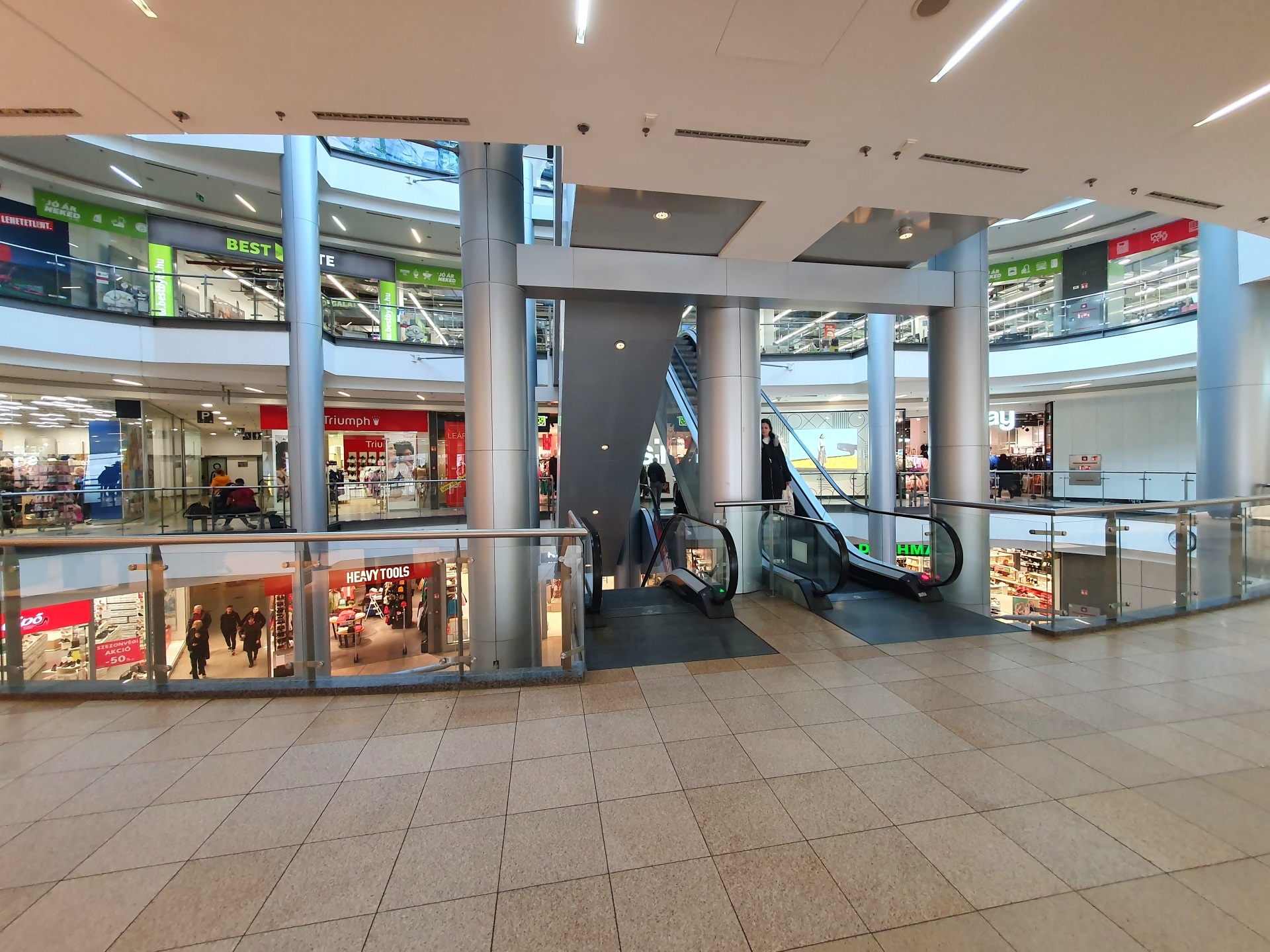
The mall is modern and clean.
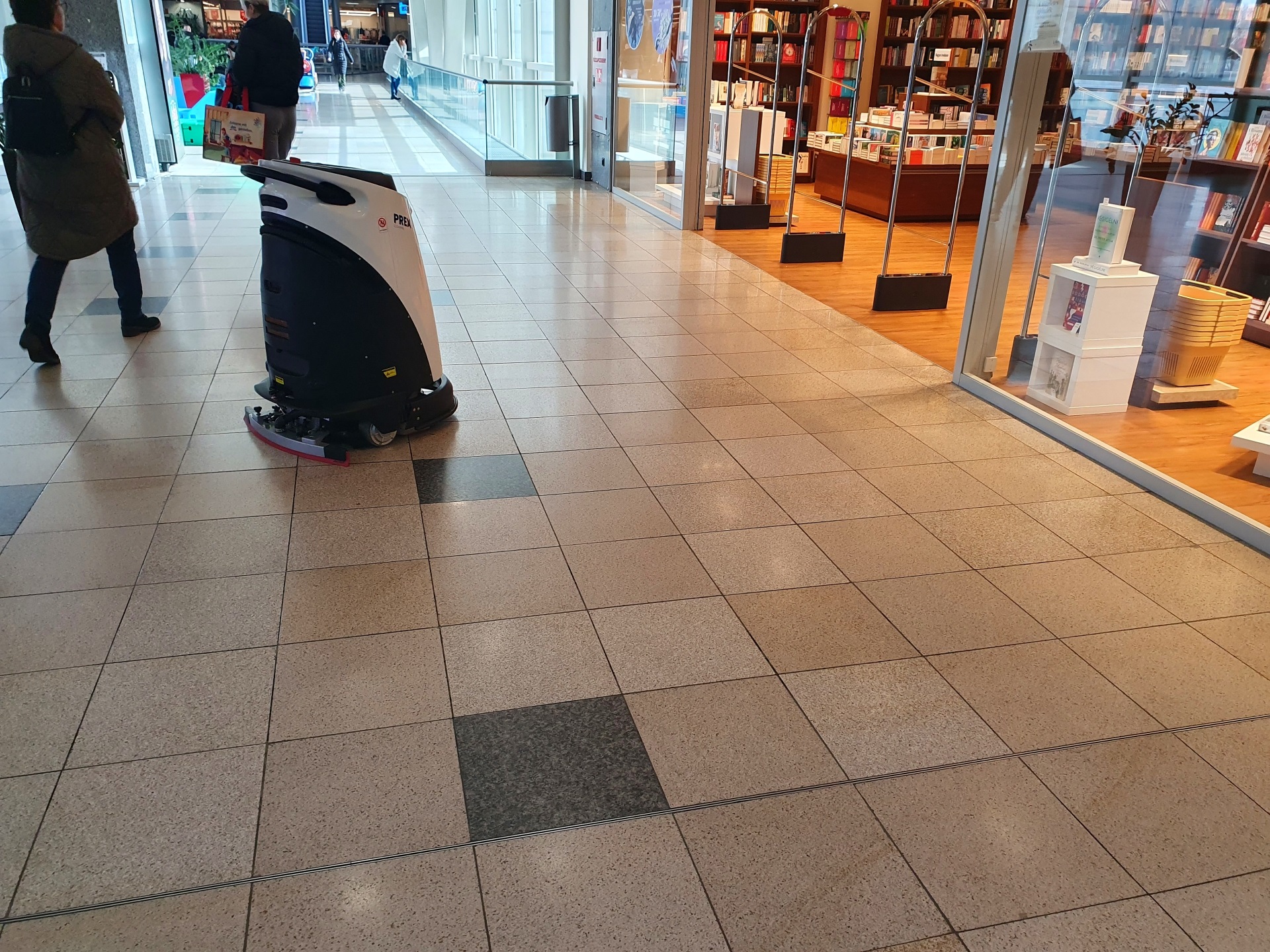
And, just like in the railway station of Debrecen, there are robots doing the cleaning…
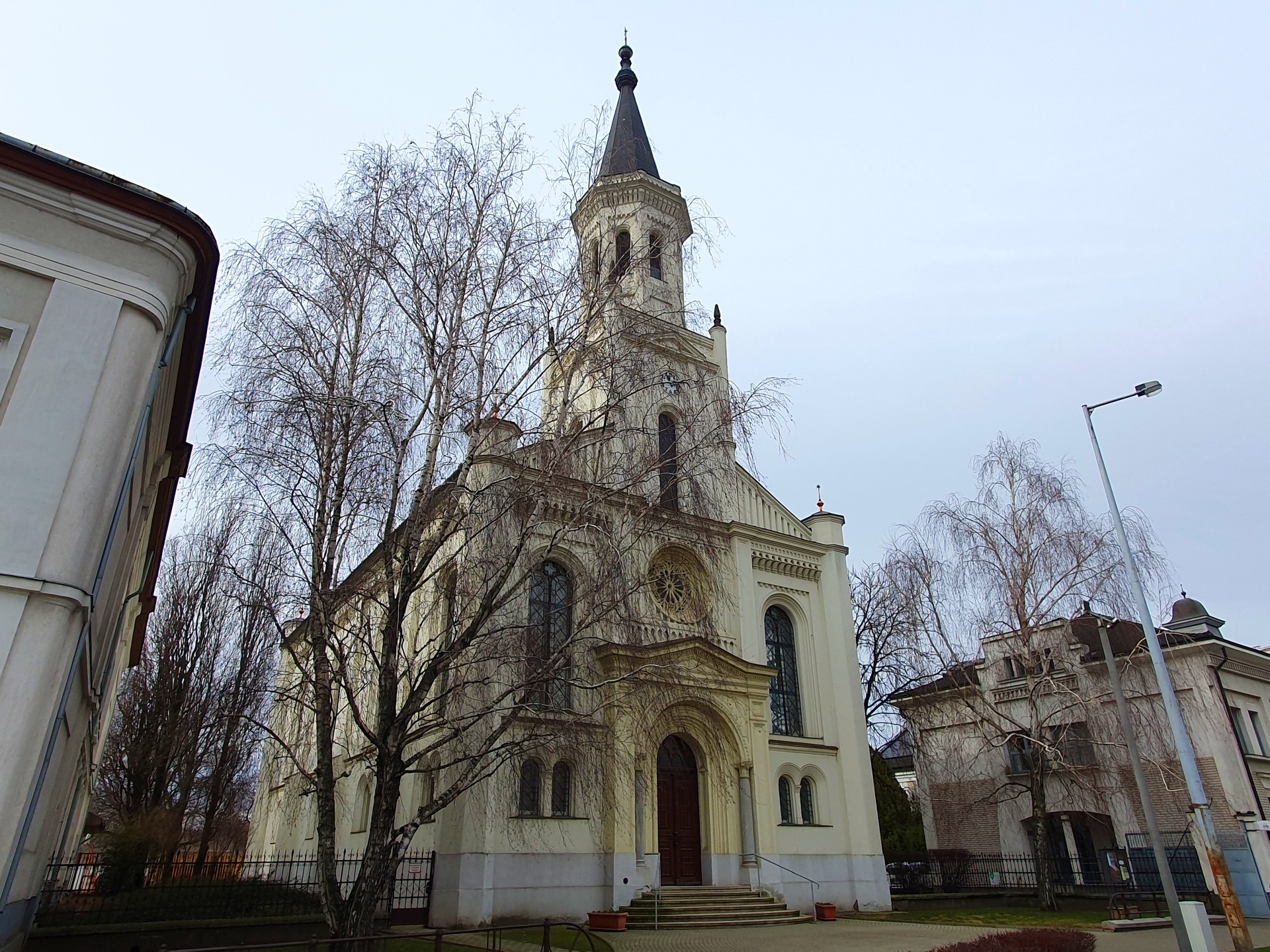
As we return to where we started our journey, here is the Nyíregyháza-City Reformed Church or Nyíregyháza-Városi Református Templom.

And here is Móricz Zsigmond Theater or Móricz Zsigmond Színház in Bessenyei tér or square.
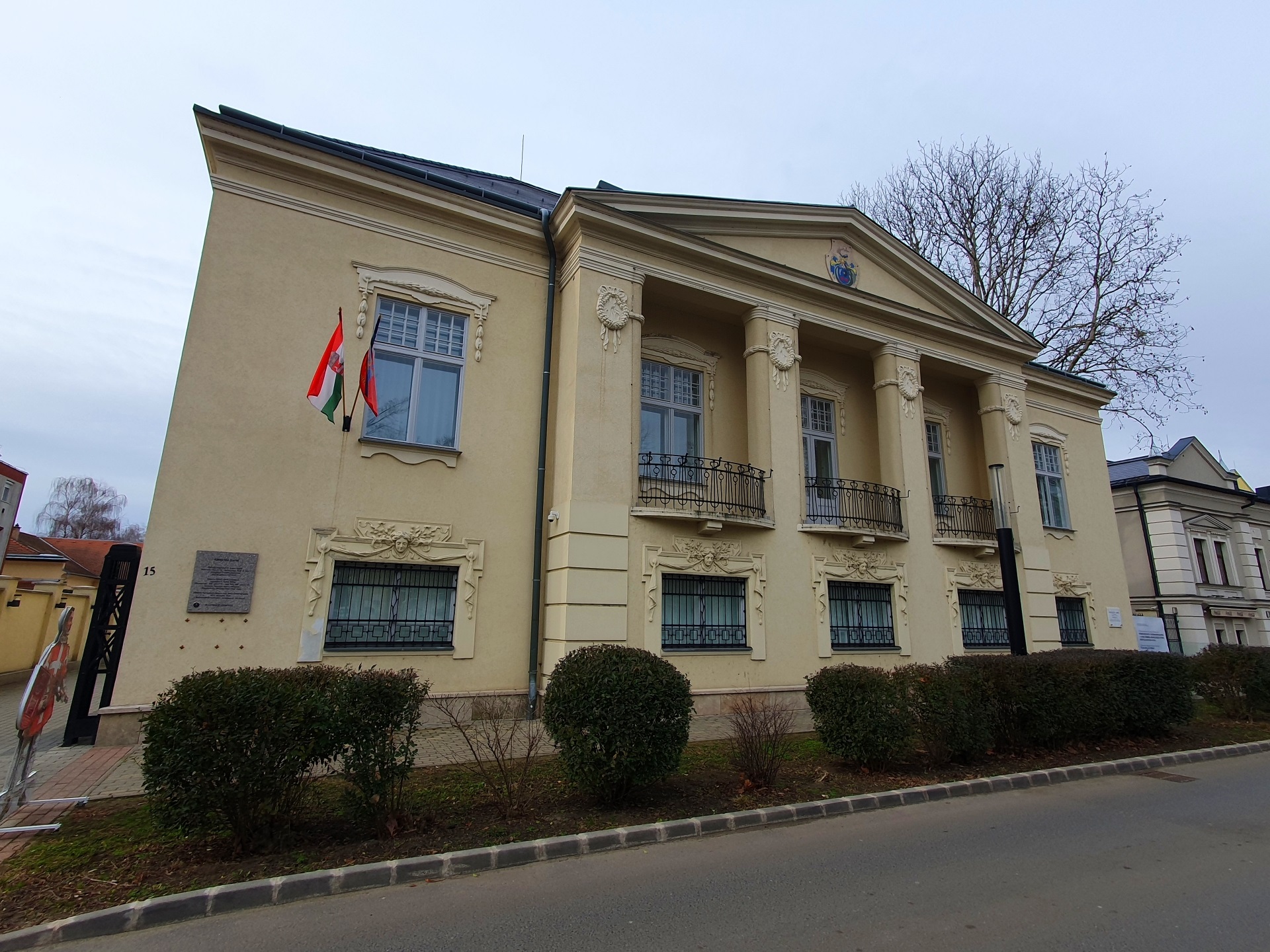
And finally, the Kállay Gyűjtemény Museum, with local history exhibitions.

The Vasútállomás is waiting for the returning trip. Or… for other trips… The railway stations have always been my fascination, as they are gateways to new horizons…
Nyíregyháza
